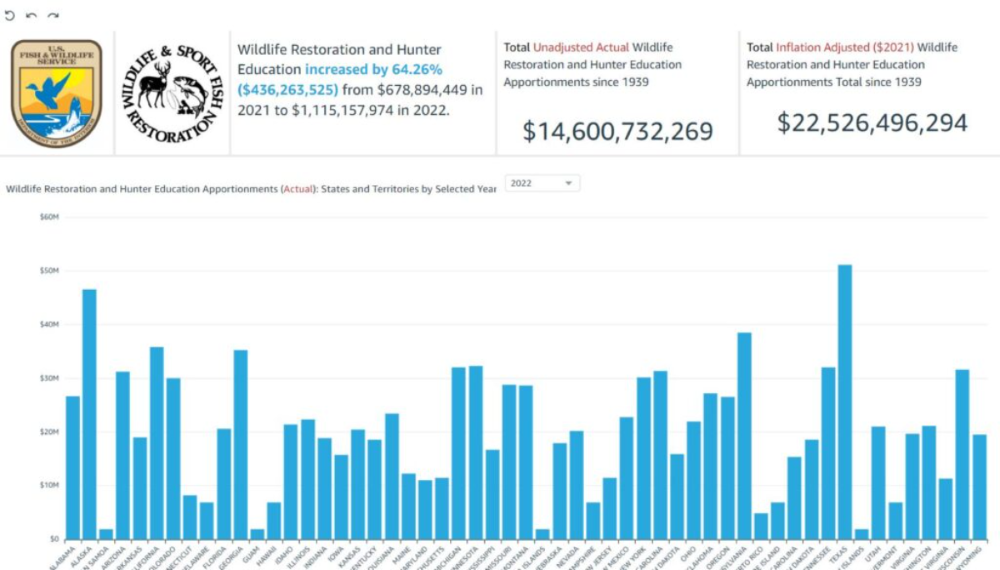December 2022 Edition | Volume 76, Issue 12
Published since 1946
New Dashboards Provide Decades of License and Apportionment Data
The U.S. Fish and Wildlife Service’s Wildlife and Sportfish Restoration (WSFR) Program recently launched an online dashboard that provides decades of information about hunting and fishing license sales as well as state apportionments of excise tax dollars. These apportionments, supported by a manufacture excise tax on sporting arms, ammunition, archery equipment and a tax on fuel, have provided conservation and management assistance for the nation’s wildlife and wild places since 1937. In FY2021, the WSFR program supported healthy fish and wildlife populations, fostered habitat protection, and increased access to clean water through over $1.1 billion in grants to state partners.
“The new WSFR data dashboards were created to provide easy access to important data,” said Jerry Leonard economist for WSFR. “By using the new data dashboards, we can visually represent decades of data by state or across the nation, allow users to download excel versions of the data, and show both actual and inflation adjusted amounts apportioned to a state or territory.” Often states and researchers use this data to view trends in license sales or to calculate the economic impact of hunting and fishing.
The hunting and fishing license data represented in the dashboard is supplied to WSFR for annual certification by state fish and wildlife agencies. “The state license data is vital because the U.S. Fish and Wildlife Service uses the data in statutory formulas to allocate funds for WSFR managed programs including The Wildlife Restoration Program and The Sport Fish Restoration Program,” said Tom Decker, WSFR Branch Manager for Communications, Analysis and Partnerships. “Since the passing of The Pittman-Robertson Wildlife Restoration Act and later The Dingell-Johnson Sport Fish Restoration Act, excise taxes collected have been used by our partners to provide hunter and angler education to 2.5 million students, supported over 500 mammal and bird species, and provided public access and habitat management on over 35 million acres of land in the United States.”
It is important to note, that the license data in the dashboard does not represent the number of hunters or anglers that participated across the United States in a particular year. Not everyone needs to buy a license; depending on the state or territory, youth, seniors, those with health conditions or impairments, commercial charters, landowners, and military veterans may be exempt. Moreover, some hunters and anglers buy licenses in multiple states and not every license buyer goes afield.

“These data dashboards and our continued web-based enhancements are expanding the tools used by WSFR to highlight our partnerships with states and industry to conserve wildlife for current and future generations,” added Decker. “It is important data for grant program eligibility, and it is equally important data to show the value of our WSFR Programs and how annual apportionments support state conservation efforts.” The current data dashboards can be accessed at: